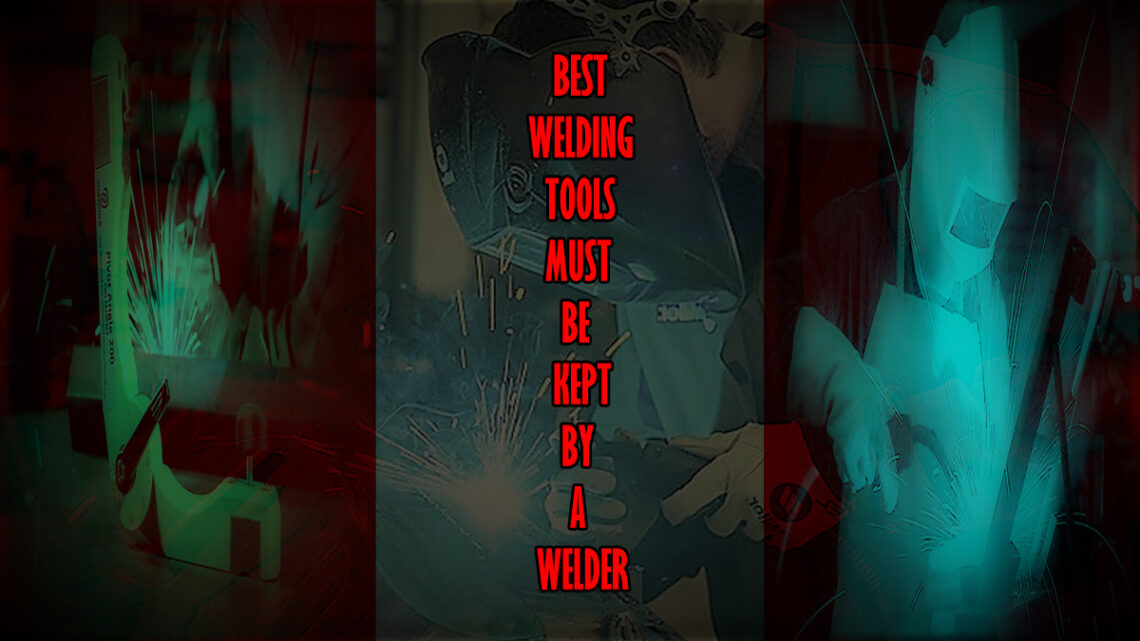
Top 20 Best Welding Tools of 2025 for Professional Welders
Looking for the best welding tools or wanna get some basic information about welding tools? If the answer is yes, then warmly welcome here. You are exactly in the right place to know about the best welding tools.
If you are an expert welder or even a beginner at welding, you have to carry the best welding tools in your arsenal which is also known as must have welding tools. Without the proper tools, completing your task will be challenging and time-consuming. And that’s why the final weld may not turn out as you had hoped.
Even if you don’t work for others as a professional welder, using subpar tools to complete your own DIY welding tasks will probably not yield the best results.
Welding is a process of joining two pieces of metal together by heating them until they melt and then cooling them so that they solidify as one piece. Basically, it is a very versatile process and can be used to join a variety of metals including steel, aluminum, and brass. Welding can be done using a variety of methods including oxy-fuel welding, arc welding, and tungsten inert gas welding.
In this article, we are trying to discuss the best welding tools of recent times which are performing efficiently in recent times. Hope so, it will be a great helping guide for a beginner, also as well as for an expert welder.
Related Article: Is Welding Hard? – The Ultimate Guide to Know About Welding
You may also read: The Ultimate Guide to Multi Process Welder
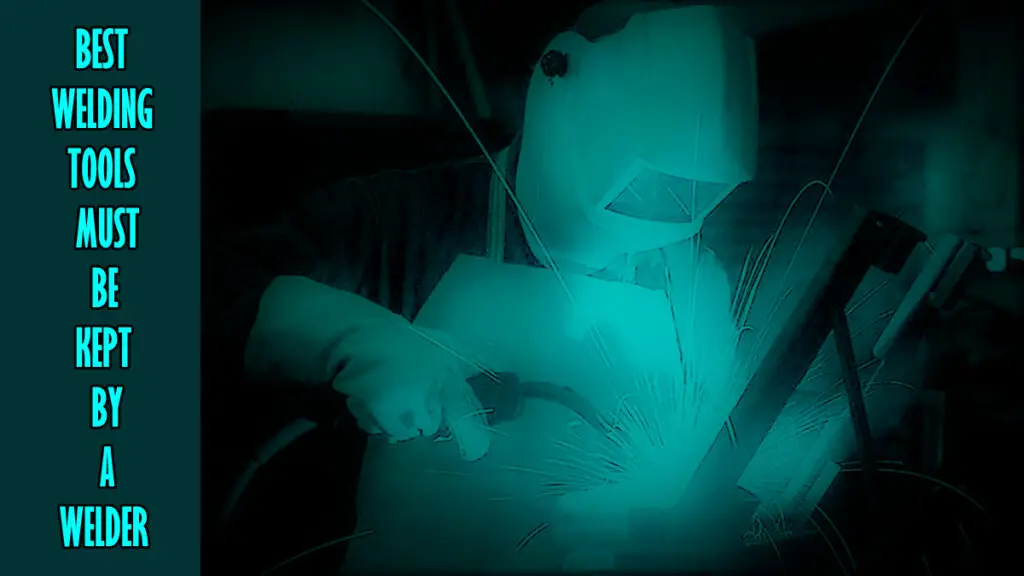
Related Article: The Major Welding Defects You Should Know
Related Article: Top 7 Best MIG Welders of 2025 for Precise Welding
Best Welding Tools Must be Kept by A Welder
1. Welding Machine
A welding machine is a device that produces an electric arc between an electrode and a workpiece to melt and join metals. The machine uses a power source, such as a transformer, to provide an electric current to the electrode. The electrode is made of a material that is electrically conductive and can withstand the heat of the arc.
The workpiece is made of a material that is conductive and can be melted by the arc. The welding machine produces a high-voltage, high-current arc between the electrode and the workpiece. The arc melts the metals at the workpiece and the electrode, and the molten metals fuse together. The machine can be used to join metals of different types, such as steel, aluminum, and copper.
The welding machine has a control panel that allows the operator to set the welding parameters. The welding parameters include the welding current, the welding voltage, the electrode type, the electrode size, the welding speed, and the travel speed.
Indeed, a welding machine is a versatile tool that can be used for a variety of applications, such as welding pipes, sheets, and plates.
2. Welding Table or Cart
If you’re serious about welding, then you know that having a quality welding table or cart is essential. It’s not just a place to set your welder and materials; it’s where you prep your work, make your cuts and do your final assembly. A good welding table or cart will make your work easier and help you achieve better results.
There are a few things to consider when choosing a welding table or cart. First, think about the size and weight of the projects you’ll be working on. A smaller table or cart may be sufficient for smaller projects, but you’ll need a larger one if you plan on working on larger pieces. Second, consider the type of welding you’ll be doing. If you plan on doing a lot of TIG welding, for example, you’ll need a table or cart that can accommodate that. Third, think about the features you need. Do you need a built-in vice or clamp? Do you need a shelf for your welding torch? Fourth, consider the price. Welding tables and carts can range from a few hundred dollars to a few thousand, so it’s important to find one that fits your budget.
Once you’ve considered all of these factors, you’re ready to start shopping for a welding table or cart. There are a few different places to look. Many hardware stores and home improvement stores sell welding tables and carts. You can also find them at welding supply stores, or you can order them online. When you’re comparing tables and carts, be sure to look at the dimensions, weight capacity, and features to find the right one.
A welding table or cart can make a big difference in your welding projects. With a little research, you can find the perfect one for your needs.
3. Welding Helmet
A welding helmet is a necessary piece of personal protective equipment (PPE) for anyone performing welding tasks. A welding helmet protects your head and face from sparks, spatter, and UV radiation while you are welding.
There are three main types of welding helmets: auto-darkening, passive, and flip-up. Each has its own advantages and disadvantages.
Auto-darkening welding helmets have a filter that automatically darkens the lens when it detects an arc. This type of helmet is the most expensive, but it provides the highest level of protection and is the most convenient to use.
Passive welding helmets have a fixed shade lens that does not darken automatically. This type of helmet is the least expensive, but it requires the welder to stop welding and flip up the helmet to inspect the weld before starting again.
Flip-up welding helmets have a lens that flips up out of the way when not in use. This type of helmet is more expensive than a passive helmet, but it is more convenient to use because the welder does not have to remove the helmet completely to inspect the weld.
No matter which type of welding helmet you choose, make sure it fits properly. A welding helmet should fit snugly and not move around on your head. It is also important to wear the helmet in the correct position. The lens should be level with your eyes and the bottom of the helmet should be low on your forehead.
Related Article: Top 9 Best Welding Helmets of 2025 for Welding Safely
4. Angle Grinder
Do you know what an angle grinder is? If you’ve ever welded before, chances are you’ve used one. An angle grinder is a handheld power tool that’s commonly used in welding. It’s used to grind down metal, and it can also be used to cut metal.
If you’re new to welding, you might be wondering how to use an angle grinder. Here’s a quick guide:
First, you’ll need to put on your welding helmet and gloves. Next, you’ll need to connect your angle grinder to a power source. Once you’ve done that, you’ll need to hold the angle grinder with both hands.
With your angle grinder, you’ll want to start by grinding down any rough edges on your metal. You can also use the angle grinder to cut metal, but you’ll need to be very careful. When you’re finished, be sure to disconnect your angle grinder from the power source.
Now that you know how to use an angle grinder, you can start welding!
5. Welding Finger
There are many hazards associated with welding, and one of the most common is the welding finger. Welding finger is a condition that can occur when the heat from the welding process burns the skin on the fingers. The condition is also referred to as welding flash or welders flash. Symptoms of welding fingers include pain, redness, and swelling. The condition can be treated by cooling the area with ice and elevation. If the symptoms are severe, medical attention may be necessary.
Welding finger is a common hazard associated with welding, and it is important to be aware of the symptoms. If you experience any pain, redness, or swelling on your fingers after welding, seek medical attention immediately.
6. Welding Apron or Jacket
A welding apron or jacket is a piece of personal protective equipment (PPE) that protects the wearer’s body from heat, sparks, and other hazards associated with welding. Welding aprons and jackets are made from a variety of materials, including leather, Kevlar, and aluminized fiber.
Leather welding aprons and jackets are the most common type of PPE worn by welders. They are made from thick, heavy-duty leather that can withstand heat, sparks, and other hazards. Leather welding aprons and jackets typically have long sleeves and come in a variety of sizes to fit different body types.
Kevlar welding aprons and jackets are made from a lightweight, heat-resistant synthetic fiber. Kevlar aprons and jackets are less bulky than leather aprons and jackets, making them a good choice for welders who work in tight spaces.
Aluminized fiber welding aprons and jackets are made from a heat-resistant fabric that is coated with aluminum. Aluminized aprons and jackets reflect heat and sparks away from the body, making them an ideal choice for welders who work in high-heat environments.
7. Welding Gloves
A good pair of welding gloves is an essential part of any welder’s personal protective equipment. Welding gloves protect the hands from the intense heat and sparks of welding, and they also provide a good grip on hot metal. There are many different types of welding gloves available, so it is important to choose the right pair for the job.
Leather welding gloves are the most common type of welding glove. They are made from split cowhide or pigskin and are very durable. Leather welding gloves are available in a variety of sizes and styles, so it is important to try them on to find the right fit.
Welding gloves made from Kevlar or other synthetic materials are also available. These gloves are usually lighter and more comfortable than leather gloves, but they are not as durable.
When choosing welding gloves, it is important to select a pair that is comfortable and that fits well. The gloves should also be durable enough to withstand the heat and sparks of welding.
8. Safety Glasses
If you are like most welders, you probably didn’t give much thought to the importance of safety glasses until you started welding. Then you quickly realized that welding without safety glasses is not only dangerous, but it is also difficult. The bright light and the sparks make it hard to see what you are doing.
Most welders will tell you that safety glasses are a must when welding. There are several reasons for this. First, welding produces bright light that can damage your eyes. Second, welding produces sparks that can fly into your eyes. Third, welding produces fumes that can be harmful if inhaled.
Fortunately, there are many types of safety glasses available that will protect your eyes from bright light, sparks, and fumes. You can even get safety glasses that have a built-in filter that will help protect your eyes from the harmful UV rays produced by welding.
No matter what type of safety glasses you choose, make sure that they fit properly. They should not be too loose or too tight. And, they should be comfortable to wear for long periods of time.
Welding without safety glasses is not worth the risk. So, make sure that you always wear safety glasses when welding. Your eyes will thank you and it will be a must-do for a welder.
9. Grinding Visor
A grinding visor is a type of safety gear that is worn over the eyes to protect them from flying debris and other potential hazards. Visors are typically made of clear plastic or polycarbonate, and they can be either full-face or half-face.
While visors are not required safety gear in most circumstances, they are recommended for anyone who will be doing any type of grinding, whether it be with a hand tool or a power tool. Grinding can create a lot of dust and debris, and even small particles can cause serious eye damage.
Visors are relatively inexpensive and easy to find, so there is no excuse not to wear one if you are going to be doing any type of grinding. Make sure to choose a visor that fits properly and does not obstruct your vision in any way. And always remember to take it off when you are done grinding!
10. Ear Protector
Welding is a dangerous profession. The sparks and heat from the welding process can cause serious burns and damage to the eyes and ears. That’s why it’s important for welders to wear proper ear protectors when working.
The harsh, continuous noises of welding are protected from the ears by using ear protection. There are a variety of ear protection products available on the market today. Some welding helmets come with built-in ear protection, while others can be purchased separately.
Welding earmuffs are designed to fit over the top of the head and protect the ears from the noise of the welding process. They can be worn with or without a welding helmet.
Welding earplugs are another option for ear protection. These plugs fit into the ear canal and provide a seal that protects against noise and sparks.
When choosing ear protection for welding, it’s important to select a product that is comfortable and easy to use. Be sure to read the instructions carefully to ensure proper fit and use.
11. Vice Grips & Pliers
Even with welding gloves on, pieces of metal that are too hot to handle must be picked up using vice grips or pliers. Some vice grips can also be used as clamps to join tiny pieces of metal.
If you’re a welder, you know that having the right tools is essential to getting the job done right. That’s why vice grips and pliers are an essential part of any welder’s toolkit.
Vice grips and pliers come in a variety of sizes and styles, so it’s important to choose the right ones for the job at hand. For example, if you’re working with small pieces of metal, you’ll need a smaller set of vice grips. Vice grips and pliers are used for a variety of tasks, including holding pieces of metal in place while you weld them, cutting wire, and stripping insulation.
No matter what type of welding project you’re working on, vice grips and pliers can help you to get the job done quickly and efficiently.
12. Welding Magnets
Basically, welding magnets are devices that are used to join two pieces of metal together. The magnets are placed on either side of the joint and then a current is passed through the magnets, which creates a magnetic field. This field causes the atoms in the metal to align themselves in such a way that the two pieces of metal are drawn together and welded together.
Welding magnets are used in a variety of industries, including the automotive, aerospace, and construction industries. They are often used to weld together parts that are difficult to reach with a welding torch.
There are two main types of welding magnets called permanent magnets and electromagnets. Permanent magnets are made from materials such as iron, steel, or nickel. Electromagnets are made from coils of wire that are wrapped around an iron core.
Permanent magnets are the most common type of welding magnet. They are less expensive than electromagnets and easier to use. However, they are not as strong as electromagnets and can only be used for welding ferrous metals. Electromagnets are more expensive than permanent magnets, but they are much stronger. They can be used for welding both ferrous and non-ferrous metals.
Welding magnets are available in a variety of sizes and shapes. The size and shape of the magnet will depend on the size and shape of the joint that needs to be welded. Welding magnets are essential tools for anyone who needs to weld two pieces of metal together. They are easy to use and they can save a lot of time and effort.
13. Welding Clamps
Welding clamps are tools that are used to hold two pieces of metal together while welding. There are many different types and sizes of welding clamps, and the type of clamp that you need will depend on the size and type of metal that you are welding.
The most important thing to remember when welding clamps is always to use the correct size and type of clamp for the job. Using the wrong type of clamp can result in serious injury, so it is important to be aware of the different types of clamps and their uses.
Welding clamps come in a variety of sizes, from small clamps that can be used for delicate work, to large clamps that are designed for heavy-duty welding jobs. There are also specialized clamps that are made for specific types of welding, such as TIG welding.
When choosing a welding clamp, it is important to consider the size and type of metal that you will be welding. You also need to consider the type of welding that you will be doing. If you are not sure which type of clamp to use, it is always best to ask a professional for advice.
14. Welding Pliers
Welding pliers are one of the most important tools for any welder. They are used to grip and hold metal pieces together while welding. There are many different types of welding pliers available on the market, so it is important to choose the right type for the job.
The most common type of welding pliers is called needle nose pliers. These pliers have a long, thin nose that is perfect for reaching into small spaces. They are also great for holding small pieces of metal together while welding.
Another type of welding plier is called a wire cutter. These pliers are used to cut wire while welding. They have a small blade that is perfect for cutting through small pieces of wire.
No matter what type of welding pliers you choose, they are an essential tool for any welder. Be sure to choose the right type of pliers for the job to ensure a successful weld.
15. Squaring Tools
Welding is a process of joining two pieces of metal together by heating them to a molten state and then cooling them so that they fuse together. In order to create a strong weld, it is important to have the two pieces of metal in alignment with each other. This is where squaring tools come in.
Squaring tools are used to ensure that the two pieces of metal to be welded are in alignment with each other. There are various types of squaring tools available, each designed for a specific purpose. For example, there are corner square tools, which are used to align the edges of two pieces of metal at right angles to each other. There are also T-squares, which are used to align the edges of two pieces of metal in a T-shape.
No matter which type of squaring tool you use, the goal is the same: to create a precise, clean, and strong weld. When squaring tools are used correctly, they help to create a weld that is much stronger than a weld that is not properly aligned.
If you are new to welding, it is important to practice using squaring tools before attempting to weld two pieces of metal together. This will help you to get a feel for how the tools work and how to use them correctly. With a little practice, you will be able to create beautiful and strong welds that will last a lifetime.
16. Hacksaw
A hacksaw can be used as a welding tool in a pinch because it can get hot enough to weld. To do this, you will need to find a way to attach the hacksaw blade to the metal you are trying to weld. This can be done with a clamp or by welding the hacksaw blade to the metal.
Once the hacksaw is attached to the metal, you will need to heat up the hacksaw blade until it is red-hot. You can do this by holding it with a pair of pliers and running it back and forth over a flame.
Once the hacksaw blade is hot enough, you can start welding the two pieces of metal together. To do this, you will need to touch the hot hacksaw blade to the two pieces of metal you are trying to weld. The heat from the hacksaw will melt the metal and fuse the two pieces together.
You can use a hacksaw as a welding tool but it’s not the ideal tool for the job. It is important to be careful when using a hacksaw as a welding tool because the blade can get very hot and cause burns.
17. Fire Extinguisher
Fire extinguishers are an important part of any welding shop. There are many types of fires that can occur in a welding shop, and each type requires a different type of fire extinguisher. The most common type of fire in a welding shop is a welding fire. This type of fire is caused by the sparks and heat of welding. Welding fires can be very dangerous because they can spread quickly and cause serious damage.
Another type of fire that can occur in a welding shop is an electrical fire. Electrical fires are caused by electrical equipment that is not properly grounded. Electrical fires can be very dangerous because they can spread quickly and cause serious damage.
The best way to prevent welding fires is to have a fire extinguisher that is designed for welding fires. Welding fire extinguishers are designed to extinguish welding fires quickly. They are usually made of a dry chemical that is designed to extinguish welding fires.
If you have an electrical fire, the best type of fire extinguisher to use is an electrical fire extinguisher. Electrical fire extinguishers are designed to extinguish electrical fires quickly. They are usually made of a dry chemical that is designed to extinguish electrical fires.
If you have a fire in your welding shop, it is important to know how to use fire extinguisher properly. Fire extinguishers are designed to extinguish fires quickly. If you use a fire extinguisher incorrectly, you could cause the fire to spread or you could be injured.
18. Welding Wire
Welding wire is a common consumable used in arc welding processes. It is made of a steel alloy and is available in various diameters and spools. The wire is fed through a welding torch, which melts the wire and the base metal to create a weld.
Welding wire is used to weld various metals together, including steel, aluminum, and stainless steel. The type of welding wire you use will depend on the type of metal you are welding. For example, steel welding wire is used to weld steel, while the aluminum welding wire is used to weld aluminum.
There are many different welding wire products on the market, each designed for a specific purpose. For example, there are flux-cored welding wires that are designed for welding in difficult-to-reach places, and there are solid welding wires that are designed for welding thicker metals.
No matter what type of welding wire you use, it is important to follow the manufacturer’s instructions carefully. Indeed, it ensures a safe and successful weld.
19. Steel Wire Brush
A steel wire brush is a versatile tool that can be used for a variety of tasks, including welding. When used properly, a steel wire brush can help remove slag, debris, and other contaminants from the welding area. It can also be used to clean the welding rod before starting a new weld.
In addition to cleaning the welding area, a steel wire brush can prepare the metal for welding. By removing rust, paint, or other debris, the steel wire brush can help to create a clean, smooth surface that is ready for welding.
When using a steel wire brush on welding, it is important to follow all safety precautions. Always wear gloves and eye protection when using the brush. And be sure to keep the brush away from the arc area. Additionally, always keep the brush moving to avoid creating too much heat in one spot.
By using a steel wire brush effectively, you can create quality welds. Basically, it is a valuable and safe tool for welding.
20. Marking Tools
Marking tools are very useful in the matter of welding. These tools are very important for doing exactly precise welding work and doing it quickly and efficiently.
There are a few different types of marking tools that can be used when welding. The most common type is the chalk line. This is a simple tool that is used to mark a line on the metal that needs to be cut.
Another type of marking tool is the scribe. This is a tool that is used to mark a line on the metal by scratching it with a sharp point. This is a more precise way to mark a line than using a chalk line.
The last type of marking tool is the transfer punch. This is a tool that is used to mark a hole in the metal so that it can be drilled. This is the most precise way to mark a hole in the metal.
To know more about welding tools Go Here>>>
Final Thoughts
The best welding tools are those that are comfortable to use, easy to set up and offer a variety of features to help you get the job done right. If you’re looking for the best welding tools for your needs, use those tools that can reduce your hard work and give comfort in working time.
In conclusion, the best welding tools are the ones that fit the welder’s needs the best. There is no one-size-fits-all answer, as each welder has different preferences. The best way to find out which welding tools are the best for a particular welder is to ask around and get recommendations from other welders.
Related Article: The Ultimate Welding Tools for Beginners
Related Article: How Do Auto-Darkening Welding Helmets Work? – A Complete Guide


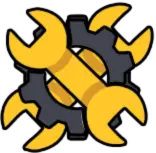
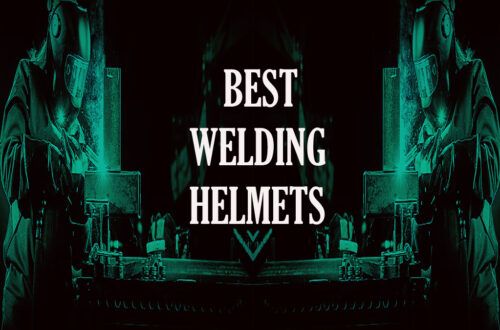
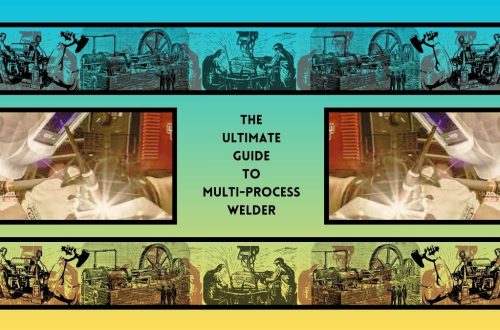
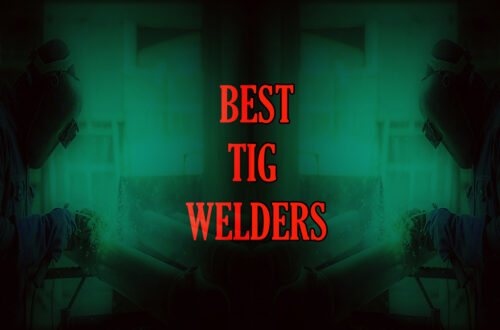
11 Comments
Dj
Informative an well written. Carry on.
toolstopics
Thanks. Stay tuned.
Pingback:
Pingback:
Pingback:
Pingback:
Pingback:
Pingback:
Pingback:
Pingback:
Pingback: